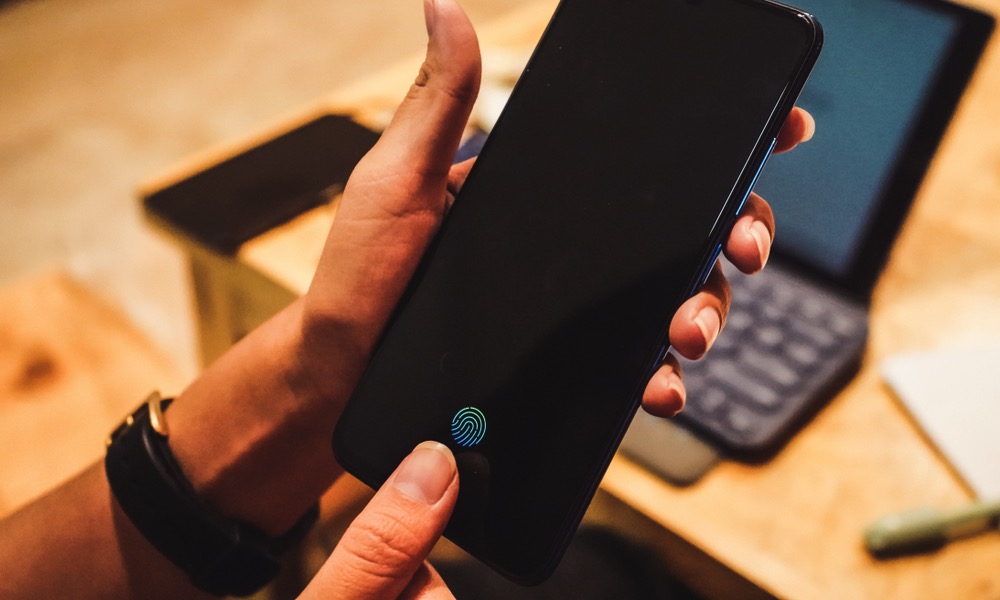iPhone Under-Display Touch ID Is Dead
 Credit: Lukmanazis / Shutterstock
Credit: Lukmanazis / Shutterstock
Toggle Dark Mode
Last month, inside sources told us that Apple was no longer working on under-display Touch ID for the iPhone. Now we have additional confirmation the company has effectively given up on that technology.
Although Apple has reportedly been working on incorporating Touch ID into the iPhone display for several years, it’s clearly been putting a lot more work into improving Face ID over the past year.
Veteran Apple analyst Ming-Chi Kuo recently sent out a Tweet (shown below) that confirms what we’ve already heard — that Touch ID isn’t coming anytime soon.
Kuo doesn’t quite say that Apple has “given up” on under-display Touch ID, but if Apple doesn’t plan to introduce it even in 2024, it’s a safe bet that it’s not coming at all.
Kuo adds, “Face ID with a mask on iPhone is already a great biometrics solution.” Apple has put significant effort into making that happen in iOS 15.4, and we can only imagine what Face ID may be capable of by 2024.
Face ID is the way forward for Apple. Touch ID is the past.
Fingerprint sensors will likely still have a place on Apple’s lower-end devices, at least for the next few years, but as the 2020 iPad Air 4 already proved, Apple doesn’t need to put the sensor under the display to accomplish this. There’s little doubt that the iPhone SE will eventually adopt a similar design, so if anything, Touch ID will gradually move to the side button, not into the display.
The Saga of Under-Display Touch ID
Rumors of under-display Touch ID go back to 2017, a few months before the iPhone X introduced Face ID. In those days, many assumed the so-called bezel-less “iPhone 8” (as opposed to the “iPhone 7s”) would move to an in-display Touch ID sensor; Face ID came as a surprise.
Even as Android manufacturers began embracing in-display fingerprint sensors, it appeared that Apple had no plans for under-display Touch ID. After all, Apple was already way ahead of the game with Face ID, and Android makers were struggling to catch up.
Nevertheless, by 2019 we began seeing indications that Apple was researching under-display Touch ID, although it wasn’t entirely clear what plans the company had for the technology.
Some suggested that Apple would use it for a lower-cost iPhone model. The TrueDepth camera sensors needed to power Face ID are some of the most expensive components of Apple’s flagship iPhone models. Analysts theorized that removing those could result in a premium iPhone design that could be sold for a lower price in more competitive markets like China.
As recently as last year, Bloomberg’s Mark Gurman reported that in-display Touch ID would come to the iPhone 13, but it would do so to complement Face ID rather than replace it.
Part of the logic behind this was that Apple needed to find a way to address all those situations where Face ID isn’t practical, which has been for all those folks wearing masks over the past couple of years. That didn’t happen, and now we know why: Apple came up with a much better solution.
It’s pretty clear that Apple is putting all of its eggs in the Face ID basket, and that’s a good thing. After all, we imagine that Apple would much rather put the Face ID camera behind the display than worry about adding a fingerprint sensor to it, and that’s a sentiment that most of us can probably agree with.
[The information provided in this article has NOT been confirmed by Apple and may be speculation. Provided details may not be factual. Take all rumors, tech or otherwise, with a grain of salt.]







